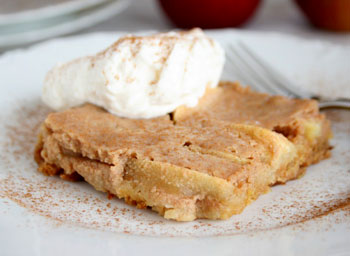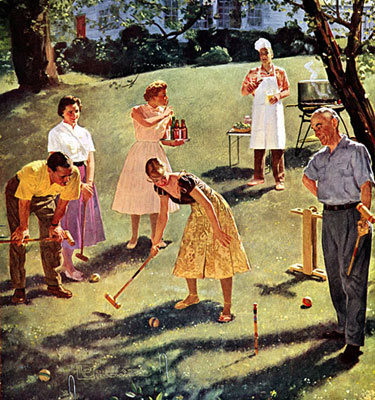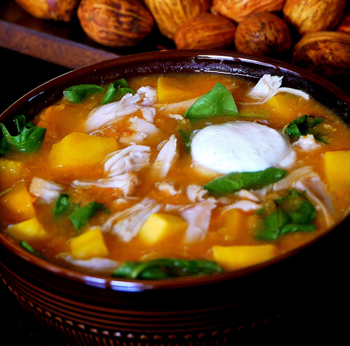 My mother had a way of inventing traditions. “It’s Lizzie’s birthday!” she’d proclaim periodically and everyone in the family would don a party hat and
My mother had a way of inventing traditions. “It’s Lizzie’s birthday!” she’d proclaim periodically and everyone in the family would don a party hat and  sing happy birthday to one of our English Springer Spaniels. The announcement of the dog’s birth and subsequent celebration of it could occur at any time – on April 5, say, or December 12. It could happen twice a year or once every few years. But however haphazard, it became a tradition.
sing happy birthday to one of our English Springer Spaniels. The announcement of the dog’s birth and subsequent celebration of it could occur at any time – on April 5, say, or December 12. It could happen twice a year or once every few years. But however haphazard, it became a tradition.
Every so often, we’d gather in the living room; my father on the bongo drums someone had given him for a birthday present, my sister on her recorder, me banging the big copper-bottomed soup pot with a wooden spoon, and my mother on piano, playing from our “American Folk Songs For Piano” songbook. “Love oh love oh careless love,” she’d sing, entirely off-key, “Love oh love oh careless love, love oh love oh careless love, see what love has done to me.”
Fall
Fall
Apple Kuchen In Disguise
 German grandmothers mixing up sweet yeast dough to form coffee cakes filled with fresh fruit of the season and rich, creamy custard made with real cream have been passing along the kuchen tradition for generations.
German grandmothers mixing up sweet yeast dough to form coffee cakes filled with fresh fruit of the season and rich, creamy custard made with real cream have been passing along the kuchen tradition for generations.
If authentic kuchen, which is a German word for “cake,” has been a common thread weaving through your family for decades, you probably won’t appreciate this recipe. The only kuchen my family eats comes to our table as a gift from an expert peach kuchen-maker who works with my husband.
The simplicity of this Quick Apple Kuchen recipe caught my attention as I browsed through an old cookbook I inherited from my mom’s extensive library. The book is so old, it refers to margarine as oleo. Up until 1952, U.S. law required margarine producers to label their product “oleomargarine.” But, the book is not so old that bakers couldn’t find cake mix in their grocery store.
Baking with Granny Smith Apples
 I'm back home in New England this week; I'm wearing my fleece, enjoying brilliant foliage, and subsisting on a diet of apples and goods baked with apples. Although you can't compare the year-round fresh produce in San Diego with the produce here, when it comes to apples, New England is indisputably #1. Although any apple can be shined on your sleeve and eaten as is, we usually divide them into eating and cooking apples: firm Cortlands for baking pies; soft MacIntosh for apple sauce; crisp Macouns for eating.
I'm back home in New England this week; I'm wearing my fleece, enjoying brilliant foliage, and subsisting on a diet of apples and goods baked with apples. Although you can't compare the year-round fresh produce in San Diego with the produce here, when it comes to apples, New England is indisputably #1. Although any apple can be shined on your sleeve and eaten as is, we usually divide them into eating and cooking apples: firm Cortlands for baking pies; soft MacIntosh for apple sauce; crisp Macouns for eating.
Before I left San Diego, I used some Granny Smith apples I had to make these Old-Fashioned Spiced Apple Streusel Muffins. The sour tang of Granny Smiths contrasts deliciously with sweet raisins, brown sugar, and spices. The beauty of this Granny Smith recipe is that they taste like your grandmother's homey spiced apple streusel muffins but with a youthful jolt of tartness. Pair them with a latte for a San Diego treat, or go New England with a nice, hot cup 'a coffee.
Pumpkin Spice Whoopie Pies Filled with Maple Cream
 Did you know the "Whoopie pie" is the State Treat of Maine? I had no idea states had designated treats. I'm dying to know what the state treat is here...it better be candy bacon.
Did you know the "Whoopie pie" is the State Treat of Maine? I had no idea states had designated treats. I'm dying to know what the state treat is here...it better be candy bacon.
While making these I started thinking about why these tasty little cakes have such a silly name. I did a little research and found Whoopie pies to be a Pennsylvania Amish and New England phenomenon. I suppose this is why I never had them as a child.
Apparently the Amish women would bake up these little desserts (likely with leftover cake batter) and put them in their husband's lunches. The men would pull out these treats and yell, "whoopie".
So...this is where I laughed out loud. I just don't see a bunch of guys yelling out, "whoopie" for cake. Do you?
Oh well, maybe they did. It was a different time. It just sounds funny. There are also three states that claim to be the birthplace of the Whoopie pie; Maine, New Hampshire and Pennsylvania. This little dessert has quite a history!
Bring on the Plums: Poems About Food

How in this sweet
aftermath of everything the mind
should settle on plums
Geri Doran
“Blue Plums”
If poetry is all about the image, then it’s understandable why so many poets have written about food. Writing about food is like writing about a lover. The poet can—and does, joyously—explore all the senses. In “I Chop Some Parsley While Listening to Art Blakey’s Version of ‘Three Blind Mice,’” Billy Collins raises dicing herbs and vegetables while listening to jazz to a whole new level of food prep. Last semester, a student’s poem about warm pita and honey inspired my class to have a party where we drank tea and prepared and ate the subject of her poem.
Of all the food groups, however, it is fruit that has inspired the greatest outpouring. What better object to evoke sensations of sweetness and succulence? What better metaphor for the body? What better metaphor for the pleasures of poetry itself? Diane Wakoski’s “Ode to a Lebanese Crock of Olives,” one of her many food poems and a veritable cornucopia of shimmering ingredients, spills over to include “the gold of lemons” and “the still life of grapes.” In “A Step Away From Them,’ Frank O’Hara’s lunch includes “a glass of papaya juice.” That’s the “lunch poem” that ends with the lines “My heart is in my / pocket, it is Poems by Pierre Reverdy,”
More Articles ...
Welcome to the new One for the Table ...
Our Home Page will be different each time you arrive.
We're sure you'll find something to pique your interest...


